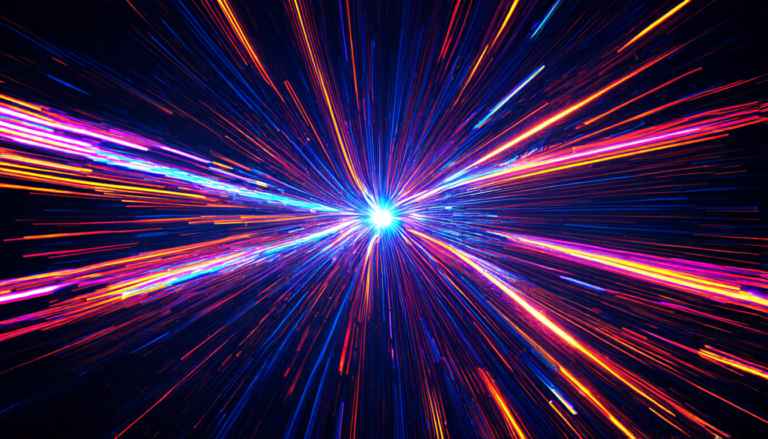Monday 21 April 2025
Scientists have made a significant discovery in the field of nuclear physics, shedding light on the fundamental structure of atomic nuclei. By analyzing the interactions between heavy ions and photons, researchers have gained insight into the behavior of gluons, tiny particles that play a crucial role in holding quarks together within protons and neutrons.
The study focused on a phenomenon known as coherent photoproduction, where a photon emitted by one nucleus interacts with another nucleus to produce a vector meson. This process is sensitive to the nuclear gluon distribution, which is essential for understanding the internal structure of atomic nuclei.
To achieve this breakthrough, scientists used ultraperipheral lead-lead collisions at the Large Hadron Collider (LHC), where two beams of heavy ions collided at nearly right angles. The resulting interactions produced a wealth of data that was analyzed by researchers using advanced computational methods.
The results showed a significant suppression of vector meson production compared to expectations based on traditional nuclear physics models. This suppression is attributed to the presence of gluons, which dominate the internal structure of nuclei at small distances.
The discovery has important implications for our understanding of the strong nuclear force, which holds quarks together within protons and neutrons. By studying the interactions between heavy ions and photons, scientists can gain insight into the behavior of gluons and their role in shaping the structure of atomic nuclei.
The research also has practical applications in fields such as hadron therapy, where high-energy particles are used to treat cancer. A deeper understanding of the strong nuclear force can lead to more effective treatments and improved patient outcomes.
Furthermore, this study demonstrates the power of particle colliders like the LHC in advancing our knowledge of the fundamental forces of nature. By pushing the limits of what is possible with these machines, scientists can continue to uncover new secrets of the universe and drive innovation in fields ranging from medicine to materials science.
In addition to its scientific significance, this research highlights the international collaboration that drives progress in physics. The study involved scientists from over 100 institutions across 30 countries, demonstrating the global scope and importance of particle physics research.
As scientists continue to explore the mysteries of the universe, discoveries like this one remind us of the incredible potential for breakthroughs and innovation that lies at the intersection of fundamental science and human curiosity.
Cite this article: “Unlocking the Secrets of the Higgs Boson: New Insights from CMS Experiment”, The Science Archive, 2025.
Nuclear Physics, Gluons, Quarks, Protons, Neutrons, Strong Nuclear Force, Large Hadron Collider, Photoproduction, Vector Meson, Particle Colliders







